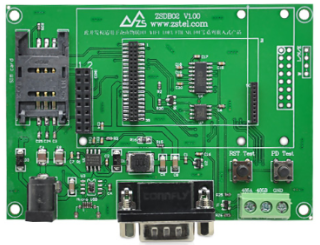Company News
Aug. 22, 2024
In SMT Process manufacturing, contactless printing is done with flexible screen templates with a space between the template and the PCB. Below SMT production technicians tell you what is the principle and process of non-contact printing. Before printing, the PCB is placed on the working bracket, fixed by vacuum or mechanical method, and the screen with printed graphics window is tightened on a metal frame and aligned with the PCB. There is a distance between the top of the PCB and the bottom of the screen (usually called scraping clearance). At the beginning of printing, the solder paste is placed on the screen in advance. The scraper moves from one end of the screen to the other end and presses the screen to make contact with the PCB surface. At the same time, the solder paste is pressed and scraped to deposit on the solder pad of the PCB through the graphic window on the screen.

Solder paste and other printed pastes are a fluid, and the printing process follows the principles of fluid mechanics. Screen printing has the following three characteristics: the front of the scraper solder paste along the vice tool forward direction of rolling; Screen and PCB surface separated by a short distance; The solder paste is transferred from the mesh to the PCB surface during the process of wire mesh contact to disconnecting the PCB surface.
Professional Printed Circuit Board ,When in use, be sure to set the stroke of the print head so that it exceeds the edge of the figure by a certain distance, otherwise too small stroke will make the edge of the printed deformation or irregularity. The pressure of the print head is too small, so that the solder paste can not effectively reach the bottom of the template hole, can not be well deposited on the solder plate, may also make the screen can not touch the PCB and affect the printing; Printing pressure is too much will make the secondary tool deformation, or even the secondary template on the larger hole in the solder paste, forming a concave surface solder deposit, serious damage to the template. The method to select the proper force is: first use a certain pressure on the template to obtain a layer of uniform thinner solder paste, and then slowly increase the pressure, so that each printing is just the template on the solder paste all evenly scraped until.
In non-contact printing, solder paste is missed onto the PCB solder pad when the auxiliary cutter detach from the PCB through the template and is printed in a very simple structure. However, with the increase of the density requirements, fine spacing printing requirements, the problem of non-contact printing is obvious.
The following are some problems of non - contact printing in fine pitch welding printing.
(1) printing position deviation. Because contact printing will deform the template, the solder paste on the template can not be printed directly below, resulting in the deviation of solder paste position.
(2) insufficient filling quantity occurs. From the microscopic view, the shape of the opening part also changes when the template is deformed, which is the reason for the reduction of filling amount and the lack of welding.
(3) infiltration and occurrence of bridging. Because of the gap between the template and the PCB, the percentage of flux penetration into the gap increases, and in extreme cases, solder paste particles seepage will cause bridging.